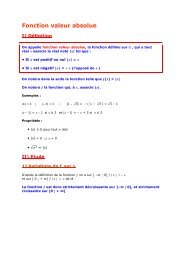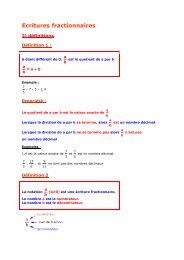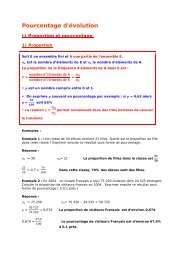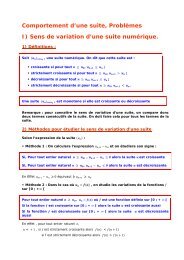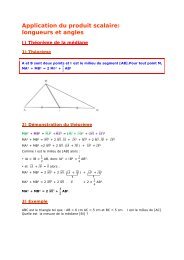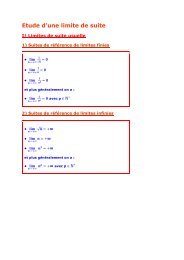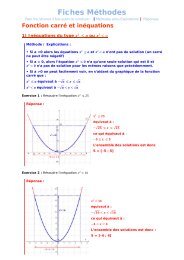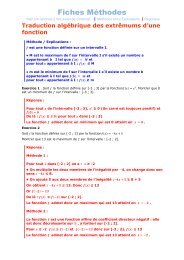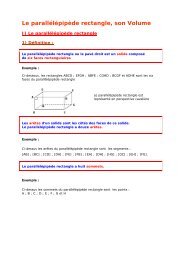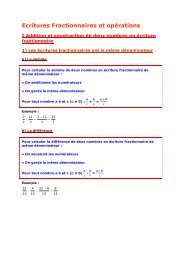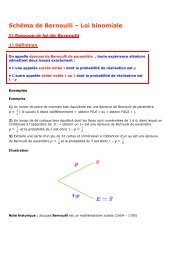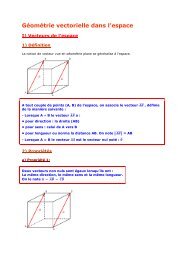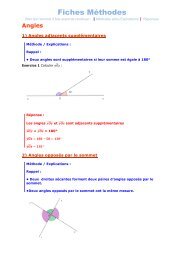Domaine de définition d'une fonction - Parfenoff . org
Domaine de définition d'une fonction - Parfenoff . org
Domaine de définition d'une fonction - Parfenoff . org
You also want an ePaper? Increase the reach of your titles
YUMPU automatically turns print PDFs into web optimized ePapers that Google loves.
Fiches Métho<strong>de</strong>sBien lire l’énoncé 2 fois avant <strong>de</strong> continuer - Métho<strong>de</strong>s et/ou Explications RéponsesRéponse :1f(x) =x + 3Cette <strong>fonction</strong> n’est pas définie pour :x + 3 = 0C'est-à-dire x = −3(On ne peut pas diviser par 0)Le domaine <strong>de</strong> définition est donc R\{−3}Exercice 2 : Déterminer le domaine <strong>de</strong> définition <strong>de</strong> la <strong>fonction</strong> :f(x) = √3x − 5Réponse :f(x) = √3x − 5.Cette <strong>fonction</strong> n’est définie que lorsque :3x − 5 ≥ 0.Ce qui revient à :3x ≥ 5C'est-à-dire :x ≥ 5 (La racine carrée d’un nombre négatif n’existe pas)3Le domaine <strong>de</strong> définition est donc [ 5 ; +∞[3Exercice 3 : Déterminer le domaine <strong>de</strong> définition <strong>de</strong> la <strong>fonction</strong>: f(x) = 2x − 34x + 5Réponse :2x − 3f(x) =4x + 5Cette <strong>fonction</strong> n’est définie que lorsque : 4x + 5 ≠ 0 (dénominateur non nul)4x + 5 = 0pour : x = − 5 4Le domaine <strong>de</strong> définition est donc R\ {− 5 } 41Exercice 4 : Déterminer le domaine <strong>de</strong> définition <strong>de</strong> la <strong>fonction</strong>:f(x) =(x + 3)(x − 5)Réponse :1f(x) =Cette <strong>fonction</strong> n’est définie que lorsque :(x + 3)(x − 5)x + 3 ≠ 0 et x − 5 ≠ 0x + 3 = 0 et x − 5 = 0pour : pour :x = −3x = 5Le domaine <strong>de</strong> définition est donc R ∖ {−3; 5}



